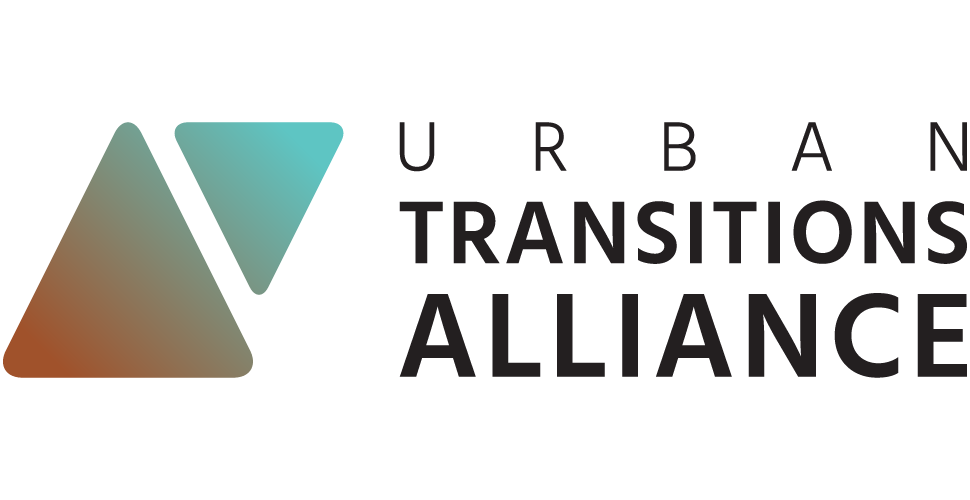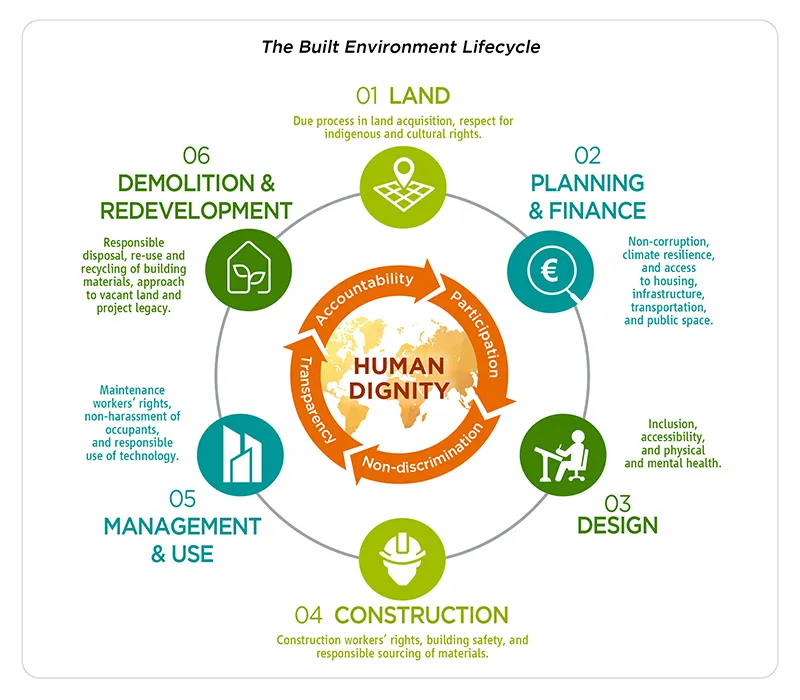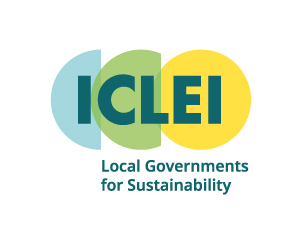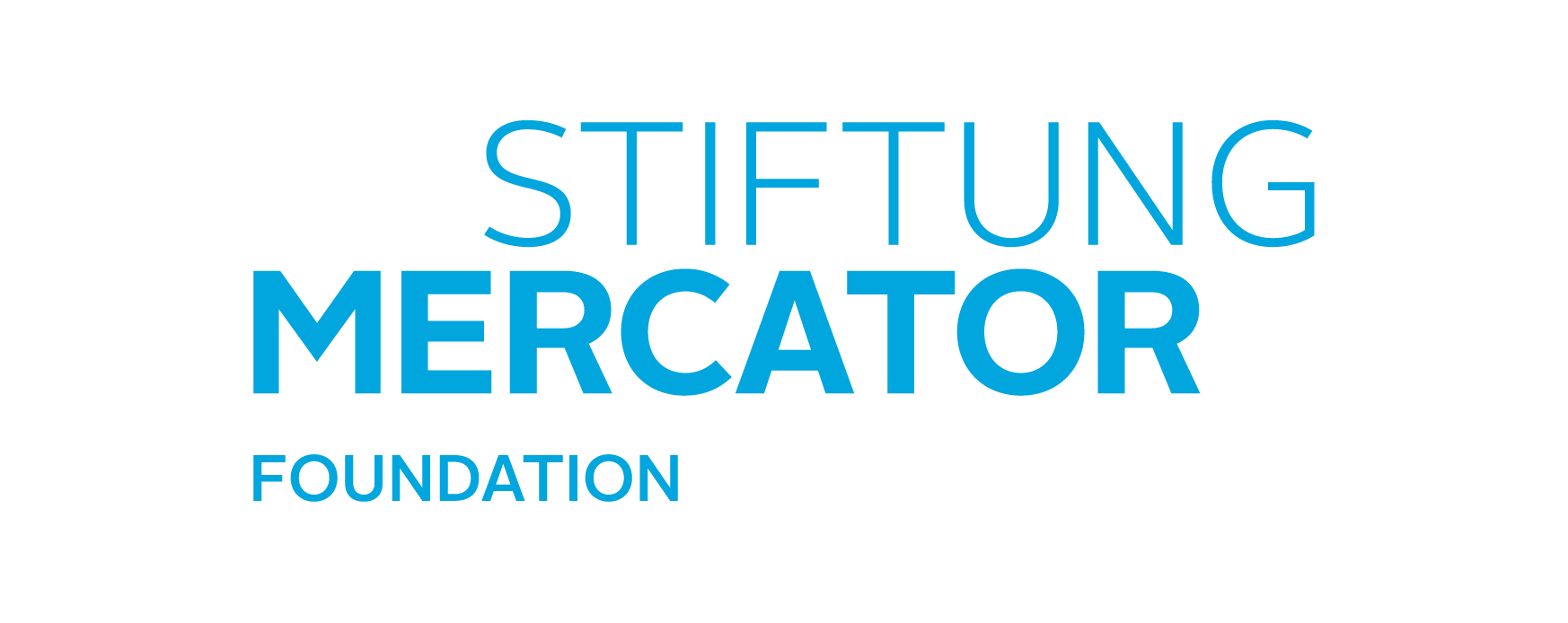WOMEN AND GIRLS AT THE CENTER OF TRANSFORMATION IN THE BUILT ENVIRONMENT
Throughout 2022 to 2024, IHRB, ICLEI and other partners advance a research and action agenda on just transitions in the built environment, with deep-dives in specific contexts as well as international-level advocacy. This resulting blog is written by Annabel Short, Senior Advisor, Built Environment, IHRB, and Dr. Ying-Chih Deng-Sommer, Sustainable Built Environment Officer, ICLEI.
This blog post also appeared on CityTalk – A blog by ICLEI on 07 March 2022.
As governments have recognized in multiple fora, action on climate change must be closely connected with action to address gender inequality. This applies to cities and towns, which are undergoing many transformations: They need to strengthen their resilience to increased extreme weather events, cope with increased migration influx due to natural and man-made crises, and dramatically reduce their emissions and resource use. These transformations can be shaped in a more just, sustainable way with the rights of women and girls at the center.
The built environment (including buildings and infrastructure) plays a defining role in the lives we live today and the future we create. From land use to re-development, all stages of the built environment lifecycle still present deep gender disparities. Yet, there are also significant opportunities to harness, as well as work already underway to realize the rights of women and gender minorities.
LAND
The built environment lifecycle begins with the question of land: its access, use, and ownership.
As the UN Working Group on discrimination against women and girls has highlighted,“women are more harshly affected by land tenure insecurity due to direct and indirect discriminatory laws and practices at the national, community and family level.” In a joint report, UN Women and OHCHR emphasize that “realizing women’s land rights is an integral part of the gender-responsive implementation of the 2030 Agenda for Sustainable Development”.
From Namibia to Oakland, USA, women are addressing gender inequities through strategies such as collective ownership models, the use of vacant land, and strengthening legal systems.
PLANNING AND FINANCE
Through their planning processes, cities determine the trajectory of their territories and the priorities for specific districts and neighborhoods. Advancing women’s priorities and bringing a feminist approach to planning can shape cities in ways that benefit everyone.
For nearly two decades, Vienna has conducted “gender mainstreaming” throughout all aspects of the city administration. It has established a dedicated department, and developed the guide “Gender Mainstreaming Made Easy”.
In eight African cities, the ICLEI initiative Urban Resilience For All promotes gender equality and inclusion in urban planning, decision-making and the design of nature-based solutions. And Cartagena, Colombia, recently signed an agreement with IHRB’s (Institute for Human Rights and Business) regional partner organization CREER (Centro Regional de Empresas y Emprendimientos Responsables), to work on integrating human rights within a new territorial plan, which will also incorporate strategies to respond to climate change.
In addition, public and private financial flows have a determining impact on what gets built, how, and for whom. Reducing gender disparities within these financial flows can help shape a more women-friendly urban structure. Some examples include:
- diversifying who is making the decisions;
- expanding access to finance to help realize the right to adequate housing for women and girls;
- strengthening the transparency and accountability of built environment finance and curbing over-speculation and;
- aligning finance more closely with locally and regionally-defined priorities.
DESIGN
The French architect Le Corbusier, whose influence was felt in urban design from the 1940s onwards, made his design decisions with a 6ft tall man in mind. This overlooked the very different needs of everyone else, including women, children, the elderly and disabled people, and sparked counter-movements such as that of the Matrix Feminist Design Co-operative.
Women’s leadership at all levels of the architecture and engineering sectors can transform the way buildings and places are designed. This begins with built environment education – for example through programs like Women in Engineering (WIE) which offers programs, events, and support for female students considering engineering at the universities in Cincinnati. Feminist approaches to design and architecture seek to expand who is involved in the building process and challenge existing power imbalances.
CONSTRUCTION
Construction is growing rapidly, with major implications for climate change and the environment: floor space and global demand for energy services in buildings are both projected to double by 2050. Efforts to decarbonize the construction industry and shift towards more sustainable, circular and local materials supply chains must manage risks and gender discrimination against women and girls while unlocking opportunities for greater gender equity.
In all regions, unions and informal-sector construction workers are advocating for expanded opportunities and the rights of women in the industry. Affiliates of Building and Woodworkers International, for example, are advancing four related campaigns: the value of women in work; ending gender-based violence; women in the trades; and stopping macho culture. Each year, the US national construction union NABATU hosts its annual “Women Build Nations” conference that brings together women construction workers from across the sector.
Governments, project owners and industry can help accelerate the participation of women construction workers and improve their working conditions through procurement practices, expanding access to training and apprenticeships, and changes in working culture and hours.
MANAGEMENT AND USE
The management and use of the built environment lifecycle – after a building or infrastructure project has been completed – is by far the longest stage of the lifecycle, so while it receives less attention, its impacts can be far greater.
In regions such as Europe where the rate of new buildings is slowing, the greatest climate impacts come from existing buildings: the region is rolling out a “renovation wave” to improve the energy efficiency of its existing building stock. Through this and similar processes, the disaggregated impacts on women, and opportunities to address these, must be taken into account, for example by ensuring that the renovation wave reduces energy poverty and protects low-income tenants from being displaced from their homes. As Michaela Kauer of the city of Vienna has written: “looking behind the numbers and into the houses and apartments of real people, we will often find an old widow with just enough pension to heat one room or a single mum who has to decide whether she will cook a warm meal or heat her children’s bedroom”.
REDEVELOPMENT
The large climate and environmental impact of buildings means that wherever possible, existing buildings should be adapted, re-used or deconstructed for re-use of their materials, rather than demolished. Women in many regions lead the charge in expanding the demand for local, reusable and recycled building materials. And in Baltimore, one of the cities in ICLEI’s Urban Transitions Alliance, the initiative Black Women Build-Baltimore trains Black women in carpentry, electrical, and plumbing to restore vacant and deteriorated houses, while also supporting home-ownership and wealth-building: it is an example of a program that strengthens the rights of women through all stages of the built environment lifecycle.
As the built environment undergoes a continued transformation in the face of climate change and other global trends, everyone – from planners and owners, to architects, designers and engineers, to construction workers and tenants – has the opportunity to also transform how we build, with women and girls at the forefront.
******
Further reading:
IHRB:
- “Dignity by design: Human Rights and the Built Environment Lifecycle”
- Other built environment programme news and reports
ICLEI:



